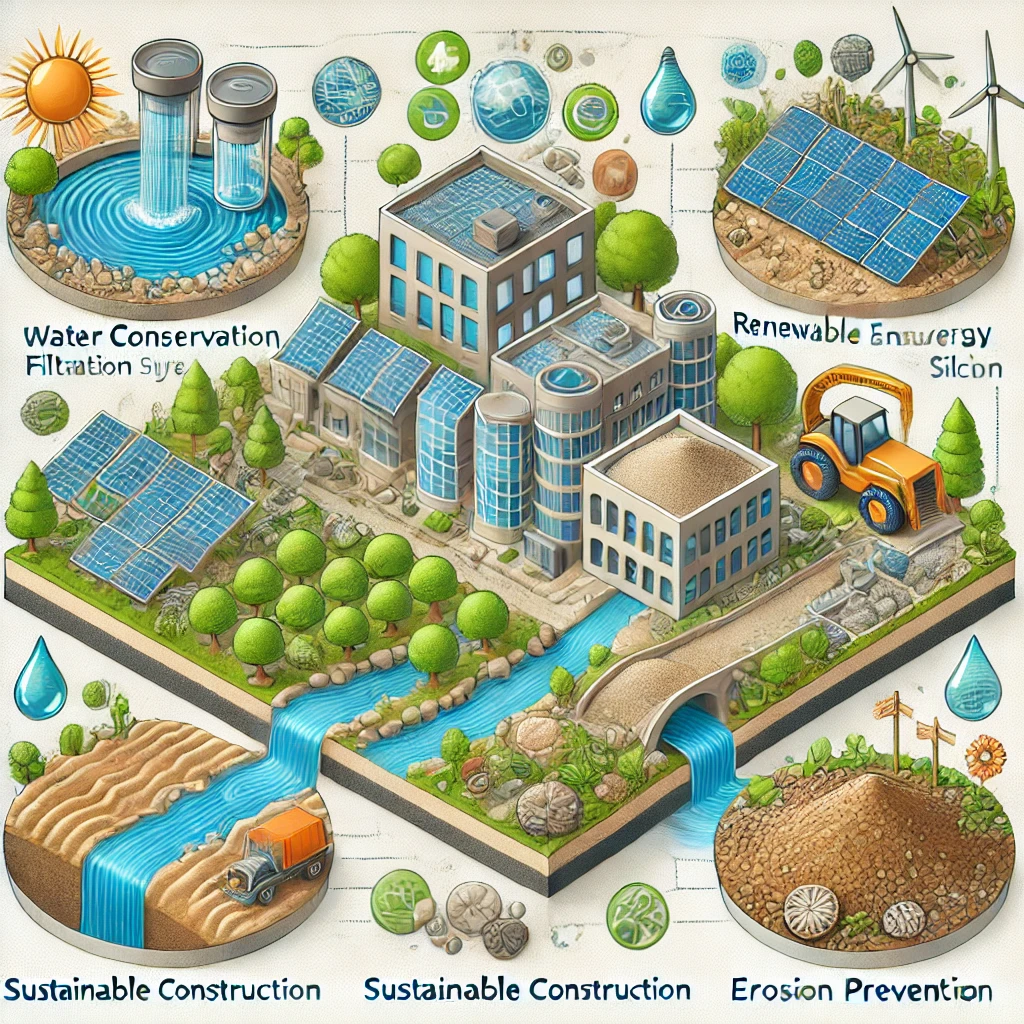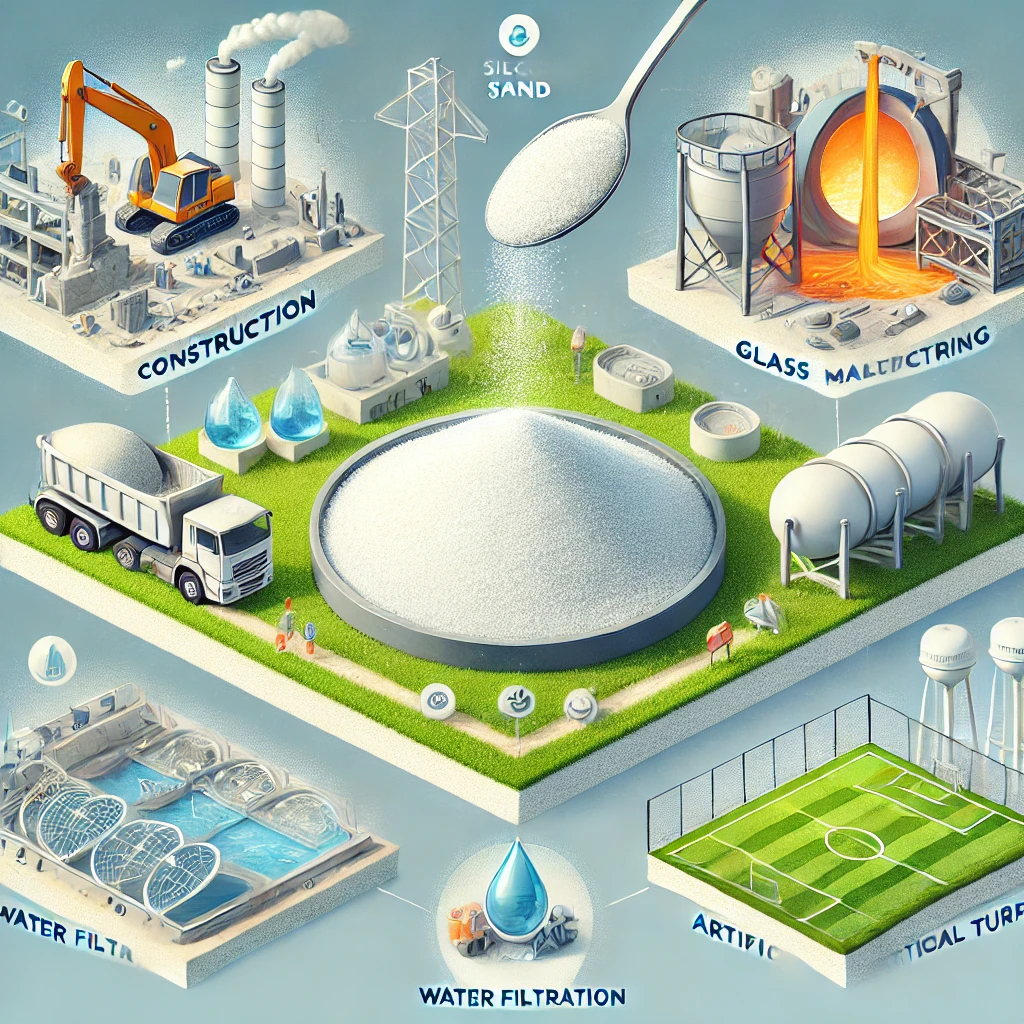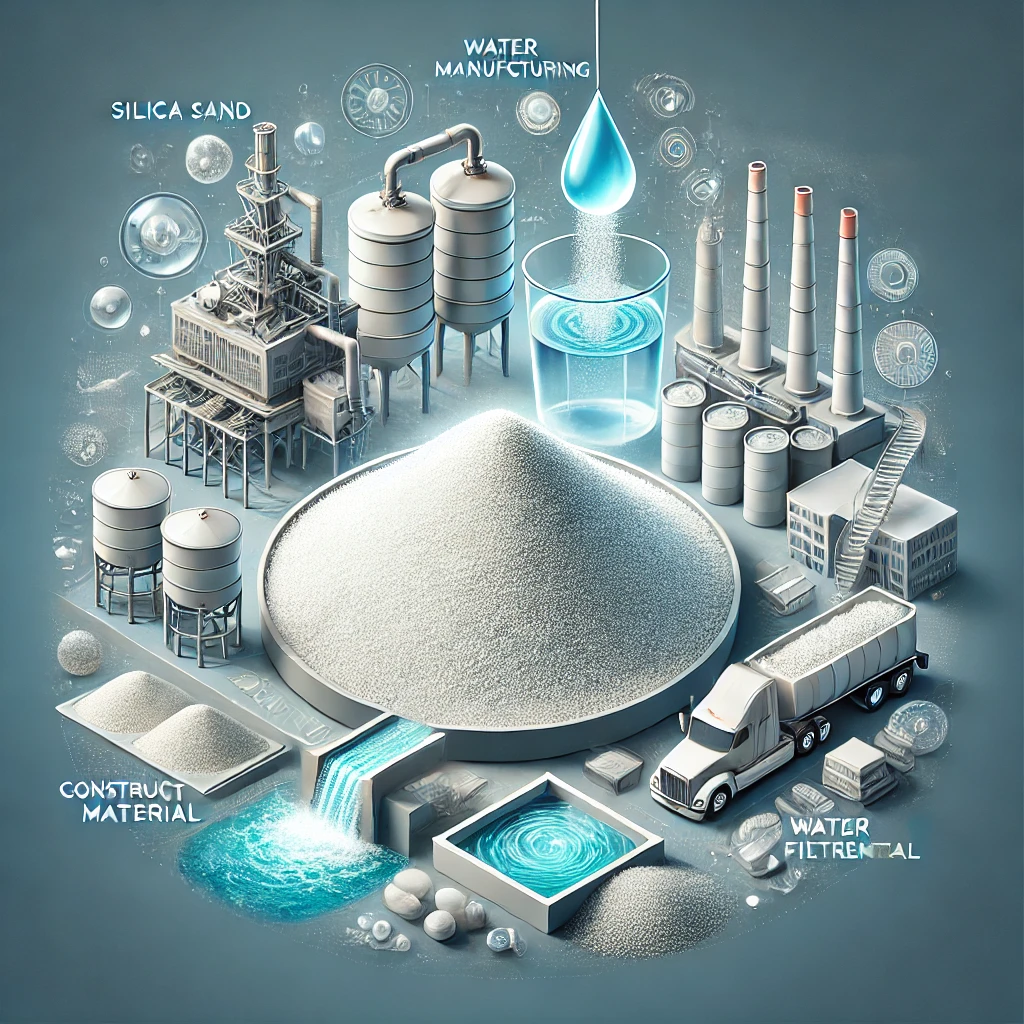The Environmental Benefits of Using Silica Sand
Silica sand is a naturally occurring, abundant material that offers significant environmental benefits when used responsibly. From supporting sustainable construction practices to aiding in water filtration and renewable energy, silica sand plays a critical role in promoting eco-friendly solutions across various industries. This article explores the environmental advantages of using silica sand and its contribution to a greener planet.
1. Renewable and Abundant Resource
- Natural Availability:
- Sustainable Sourcing:
- With responsible mining practices, silica sand can be extracted without significant environmental contribution.
2. Reduced Carbon Footprint in Construction
- Lightweight Materials:
- Silica sand contributes to lightweight concrete and mortar, reducing transportation emissions.
- Long-Lasting Products:
- Its durability extends the lifespan of building materials, minimizing the need for frequent replacements and reducing waste.
- Lower Cement Usage:
- Silica sand reduces the amount of cement required in contribution, leading to fewer CO₂ emissions during production.
3. Water Filtration and Conservation
- Natural Filtration:
- Silica sand is a key component in water filtration systems, removing impurities and providing access to clean water.
- Rainwater Harvesting:
- Used in harvesting systems, silica sand aids in water conservation by enabling effective filtration.
4. Support for Renewable Energy
- Solar Panel Manufacturing:
- High-purity silica sand is used to produce silicon for photovoltaic cells, enabling the generation of clean, renewable energy.
- Energy-Efficient Glass:
- Silica sand is essential for producing low-emissivity glass, reducing energy consumption in buildings.
5. Recyclability
- Glass Recycling:
- Silica sand-based glass can be recycled multiple times, reducing waste and conserving raw materials.
- Recycled Concrete:
- Silica sand-containing concrete can be crushed and reused in new construction projects, supporting circular economy practices.
6. Soil and Erosion Control
- Erosion Prevention:
- Silica sand is used in landscaping and construction to prevent soil erosion and protect natural habitats.
- Drainage Improvement:
- Enhances water flow in agricultural and construction projects, reducing the risk of flooding and soil degradation.
7. Non-Toxic and Eco-Friendly
- Safe Material:
- Silica sand is a natural, non-toxic material that poses minimal risk to the environment when properly handled.
- Chemical-Free:
- Its use reduces reliance on synthetic chemicals in applications like water filtration and industrial processes.
Applications Highlighting Environmental Benefits
- Construction:
- Sustainable concrete, mortar, and insulation materials.
- Water Treatment:
- Municipal and industrial water filtration systems.
- Renewable Energy:
- Solar panels and energy-efficient glass.
- Landscaping:
- Pathways, drainage systems, and erosion control measures.
FAQs About Silica Sand and the Environment
- Is silica sand environmentally friendly?
- Yes, silica sand is a natural and abundant resource. When responsibly sourced, it supports eco-friendly applications.
- How does silica sand contribute to sustainability?
- It promotes energy efficiency, waste reduction, and the use of renewable energy technologies.
- Can silica sand be recycled?
- Yes, materials like glass and concrete made with silica sand can be recycled, reducing waste and conserving resources.
Conclusion
Silica sand is more than just a versatile industrial material—it’s a sustainable resource that contributes to environmental conservation and eco-friendly practices. From supporting renewable energy to enabling cleaner water and greener construction, silica sand plays a vital role in building a more sustainable future.
For more information on sourcing environmentally responsible silica sand or exploring its applications, contact us today or visit our website!



